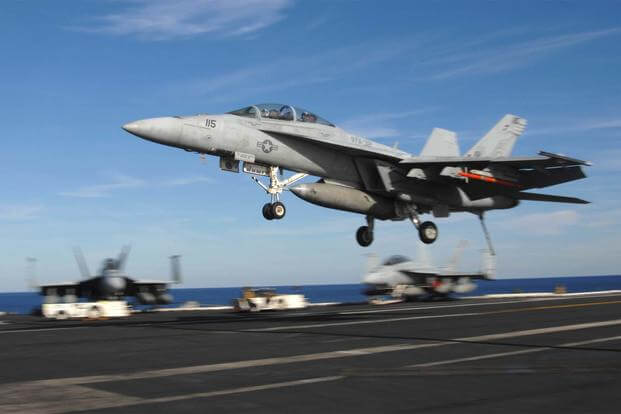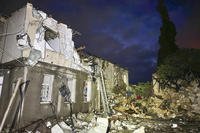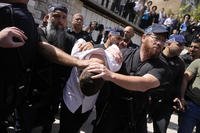The U.S. Navy on Monday resumed flights of its F/A-18E/F Super Hornet fighter jets and EA-18G Growler electronic attack aircraft after an accident triggered a temporary stand-down.
The sea service on Friday had suspended operations involving the twin-engine, Boeing Co.-made planes after an accident at Naval Air Station Whidbey Island in Washington state.
A Growler experienced an unspecified "on-deck emergency" around 11 a.m. Friday, injuring both the pilot and electronic warfare officer, who were medically evacuated in a helicopter to Harborview Medical Center about 90 miles south.
A spokeswoman at Whidbey Island referred questions about the incident to Naval Air Forces in San Diego.
The sailors, members of the Electronic Attack Squadron (VAQ) 132, remain hospitalized, according to Lt. Leslie Hubbell, a spokeswoman for Naval Air Forces in San Diego.
In a telephone interview with Military.com, Hubbell said the incident involved the plane's canopy, the enclosure over the cockpit and a key part of the ejection system. She wasn't able to provide additional details, citing the ongoing investigation into the mishap.
In a release, the Navy said safety concerns "necessitated an operational pause for all Super Hornets and Growlers."
Engineers from Naval Air Systems Command and the Chicago-based aerospace giant identified "several factors that likely contributed to the mishap," the service said without naming them, and directed "mitigation measures" to be taken across the fleet since the Growler and Super Hornet systems have "some similarities in the component designs."
The release continued, "Once individual squadrons have briefed and incorporated these mitigation measures, they may resume normal flight operations."
As of 2015, the Navy had 545 F/A-18E/F models in the inventory and plans to purchase a total of 563 of the aircraft, according to information compiled by the Navy League. As of last year, the sea service had 114 EA-18G aircraft, the electronic attack variant of the Block II Super Hornet, with plans to eventually buy 152 of the planes.
-- Brendan McGarry can be reached at brendan.mcgarry@military.com. Follow him on Twitter at @Brendan_McGarry.





























